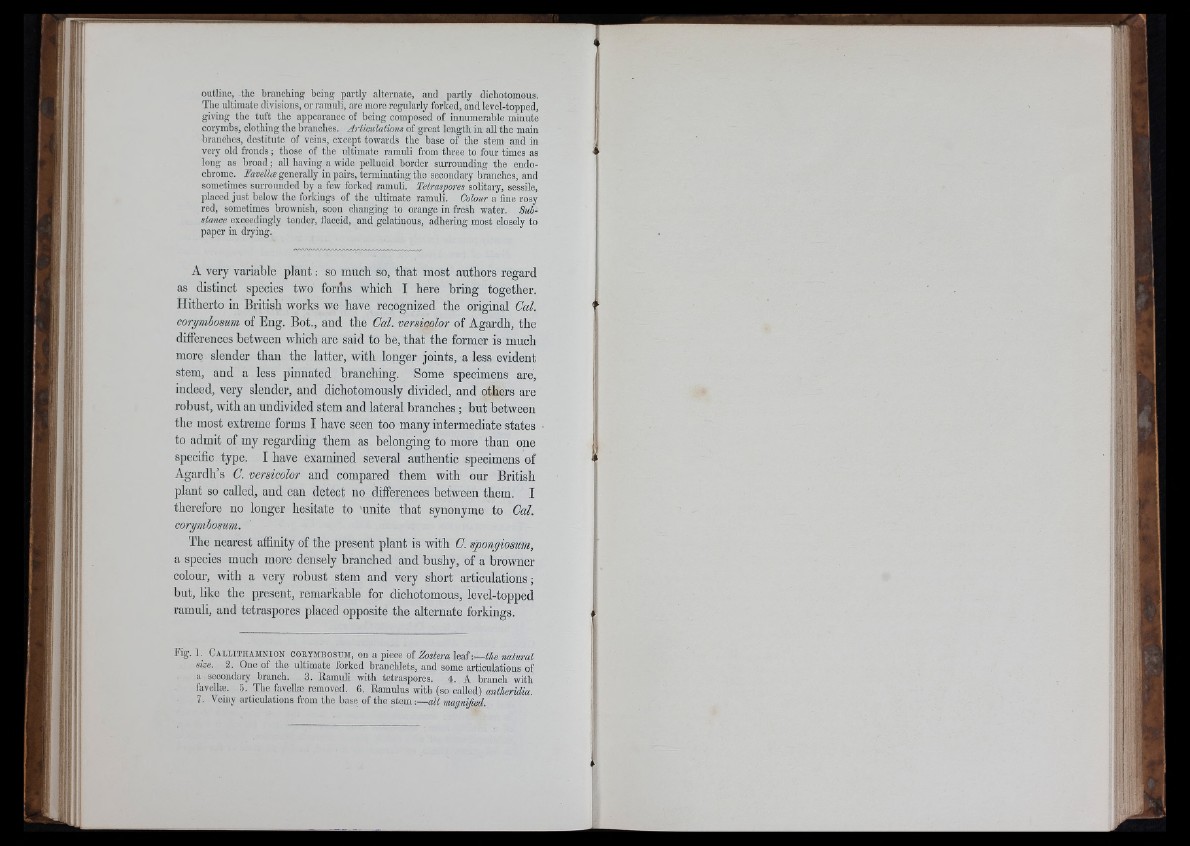
■ . i
■I L outline, the branching being partly alternate, and partly dichotomous.
The ultimate divisions, or ramuli, are more regularly forked, and level-topped,
giving the tuft the appearance of being composed of innumerable miuute
corymbs, clothing the branches. Articulations of great length in all the main
branches, destitute of veins, except towards the base of the stem and in
very old fronds ; those of the ultimate ramuli from three to four times as
long as In-oad ; all having a wide pellucid border surrounding the endochrome.
Favelloe generally in pairs, terminating the secondary branches, and
sometimes surrounded by a few forked ramuli. Tetraspores solitary, sessile,
placed just below the forkings of the ultimate ramuli. Colour a fine rosy
red, sometimes brownish, soon changing to orange in fresh water. Substance
exceedingly tender, flaccid, and gelatinous, adhering most closely to
paper in drying.
ii
i i
: i i i
■' r''
I
A very variable plant: so much so, that most authors regard
as distinct species two forms which I here bring together.
Hitherto in British works we have recognized tlie original Cal.
corymbosum of Eng. Bot., and the Gal. versicolor of Agardh, the
differences between which are said to be, that the former is much
more slender than the latter, with longer joints, a less evident
stem, and a less pinnated branching. Some specimens are,
indeed, very slender, and dichotomously divided, and others are
robust, with an undivided stem and lateral branches; but between
the most extreme forms I have seen too many intermediate states
to admit of my regarding them as belonging to more than one
specific type. I have examined several authentic specimens of
Agardh’s C. versicolor and compared them with our British
plant so called, and can detect no differences between them. I
tlierefore no longer hesitate to unite that synonyme to Cal.
corymbosum.
The nearest affinity of the present plant is with C. spongiosum,
a species much more densely branched and bushy, of a browner
colour, with a very robust stem and very short articulations;
but, like the present, remarkable for dichotomous, level-topped
ramuli, and tetraspores placed opposite the alternate forkings.
Fig. 1 , C .1M IT H A M N 1 0N CORYMBOSUM, Oil a piece 0Î Zostera IceS-.— the natural
size. 3. One of the ultimate forked branchlets, and some articulations of
a secondary branch. 3, Hamuli with tetraspores. 4. A branch with
favellæ. 5. The favellæ removed. 6. Ramulus with (so called) antheridia.
7. Veiny articulations from the base of the stem -.— alt magnijkd.
it!
■: 1 ' •!
"Hi‘f